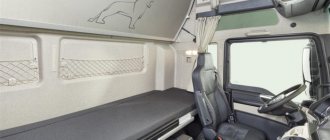Fuel consumption rates
In accordance with the Decree of the Government of the Russian Federation of July 30, 2004 N 395 “On approval of the Regulations on the Ministry of Transport of the Russian Federation” (Collection of Legislation of the Russian Federation, 2004, N 32, Art. 3342) and in order to implement the order of the Ministry of Transport dated 24.06. 2003 N 153 “On approval of the Instructions for accounting for income and expenses for ordinary activities in road transport” (registered by the Ministry of Justice of Russia on July 24, 2003, registration N 4916):
Introduce the methodological recommendations “Consumption standards for fuels and lubricants in road transport.”
Deputy Minister A.S. Misharin
Appendix to the order of the Ministry of Transport of the Russian Federation dated March 14, 2008 N AM-23-r
Guidelines
“Consumption standards for fuels and lubricants in road transport”
I. General provisions
1. Methodological recommendations “Consumption standards for fuels and lubricants in motor transport” (hereinafter referred to as fuel consumption standards) are intended for motor transport enterprises, organizations involved in the management and control system, entrepreneurs, etc., regardless of the form of ownership operating automotive equipment and special rolling stock on automobile chassis on the territory of the Russian Federation.
2. This document provides the values of basic, transport and operational (including surcharges) fuel consumption standards for general purpose rolling stock, fuel consumption standards for the operation of special vehicles, the procedure for applying standards, formulas and methods for calculating standard fuel consumption during operation, reference regulatory data on lubricant consumption, values of winter allowances, etc.
3. The consumption rate of fuels and lubricants in relation to road transport implies an established value for the measure of its consumption when operating a vehicle of a specific model, brand or modification.
The consumption standards for fuels and lubricants in road transport are intended for calculating the standard value of fuel consumption at the point of consumption, for maintaining statistical and operational reporting, determining the cost of transportation and other types of transport work, planning the needs of enterprises for the supply of petroleum products, for calculating the taxation of enterprises, implementing mode of economy and energy conservation of consumed petroleum products, settlements with vehicle users, drivers, etc.
When normalizing fuel consumption, a distinction is made between the basic value of fuel consumption, which is determined for each model, brand or modification of a car as a generally accepted norm, and the calculated standard value of fuel consumption, which takes into account the transport work being performed and the operating conditions of the vehicle.
9. Flatbed trucks
For onboard cargo vehicles and road trains, the standard value of fuel consumption is calculated using the formula:
Qн = 0.01 x (Hsan x S + Hw x W) (1 + 0.01 x D), (3)
where Qн is the standard fuel consumption, l;
S—mileage of a car or road train, km;
Hsan is the fuel consumption rate for the mileage of a car or road train in running order without load;
Hsan = Hs + Hg x Gnр, l/100 km,
where Hs is the basic fuel consumption rate for the mileage of a car (tractor) in running order, l/100 km (Hsan = Hs, l/100 km, for a single car, tractor);
Chassis
This part is characterized by low weight, a huge margin of safety, and a small number of components. This is how engineers increased the reliability of the car.
“Scania” is a tractor whose technical characteristics, as well as a successful and technologically advanced chassis, make it possible to transport absolutely any cargo over long distances. Even the condition of the road is not important here.
Wheel formulas of tractors start from 4*2 to 10*4. Such a large selection can significantly reduce transportation costs and reduce tire wear.
Most tractor models have increased ground clearance, wheel drive and all-wheel drive. The vehicle's axles are equipped with wear-resistant bearings, which can significantly extend the life of the chassis components.
The suspension system uses parabolic springs and air shock absorbers. The chassis level can be adjusted. You can control the ground clearance directly from the cab. Any tractor is equipped with a stiffness stabilizer. The front axle can be loaded up to 8.5 tons.
G400 Transmission and Gearbox Plan for the Future
| Fuel consumption standards, consolidated cargo and cargo throughout Russia on GRUZ-info. Carriers, cargo owners and forwarders. For cargo flatbed vehicles and road trains performing work counted in ton-kilometers, in addition to the basic norm, the fuel consumption rate increases on the basis of liters for each ton of cargo per 100 km, depending on the type of fuel used for gasoline - up to 2 liters; diesel fuel - up to 1.3 l; liquefied petroleum gas CIS - up to 2.64 l; compressed natural gas LNG - up to 2 cubic meters. When transporting dairy products by a road train consisting of a Scania R410 CNG 4x2 truck tractor and a refrigerated semi-trailer on the Moscow-St. Petersburg route with a mileage of 6199 km, an average weight of the road train of 29 tons and a gas consumption of 38.4 cubic meters. |
| SCANIA HPI: 25.8 l/100km - HOW to achieve such fuel consumption. The technical characteristics of the Scania G400 indicate its main purpose: the machine is intended for transporting goods over long and medium distances, included in a road train along public roads. If you're leaving in your own backyard or in a parking lot that has a power line, simply plug an extension cord into the electrical socket. |
Truck tractor series • Scania gas-powered tractors are equipped with cabs in the P, G and R series, as well as the low-floor L version.
Designed for long-haul transportation
The R series of trucks is all about innovation. It uses powerful eight-cylinder power units and a higher quality and optimized suspension.
These are extremely practical and comfortable models. They are the most popular because they have a number of additional and very useful options and features.
Of course, any Scania tractor has excellent technical characteristics, which are combined with high production standards. This allows the brand to produce cars that are known, recognized and loved all over the world.
SCANIA HPI: 25.8 l/100km - HOW to achieve such fuel consumption
Please Login or Register to join the conversation.
Less - more
- Posts: 1
- Thanks received: 0
1 year 8 months back #112 from yral203 yral203 replied to the topic SCANIA HPI: 25.8 l/100km - HOW to achieve such fuel consumption
Hello, how much has fuel consumption decreased? I have the same Scania, I haul 24 tons, consumption is 39-40, if I do the same as in the video it will help reduce consumption?) because sometimes the fuel consumption readings are completely different than on the computer and in reality .
Please Login or Register to join the conversation.
Less - more
- Posts: 1
- Thanks received: 1
1 year 8 months back #113 by Roman230881 Roman230881 replied to the topic SCANIA HPI: 25.8 l/100km - HOW to achieve such fuel consumption
Good afternoon Where can you do the same? Same symptoms, smoke and vibration. If anyone knows, please tell me. VIN code, 2041989
Thanks said: admin
Please Login or Register to join the conversation.
Less - more
- Posts: 555
- Thanks received: 14
1 year 8 months back #114 by admin admin replied to the topic SCANIA HPI: 25.8 l/100km - HOW to achieve such fuel consumption
Hello. The PDE has the same sensor and is responsible for the same thing. Therefore, it can be done, but you need to know what your boost sensor shows. And in general, start with diagnostics.
Please Login or Register to join the conversation.
Less - more
- Posts: 1
- Thanks received: 1
1 year 8 months ago #115 from Andry Andry replied to the topic SCANIA HPI: 25.8 l/100km - HOW to achieve such fuel consumption and specific photos/videos can be taken from the sensor. Thanks said: admin
Please Login or Register to join the conversation.
Less - more
- Posts: 555
- Thanks received: 14
1 year 8 months back #116 by admin admin replied to the topic SCANIA HPI: 25.8 l/100km - HOW to achieve such fuel consumption
On the sensor connector, I cleaned the third contact (labeled there), soldered one end of the wire to it, and secured the other to the control unit mounting bolt.
Cost of installation and equipment © Transmission system
| Scania 93 M/280 / Scania 3-series, 2-engine chassis, 282 l. s, manual transmission, 1988 - 1996 - increased fuel consumption per km, however, recently Scania has been professing the on-demand principle, when the need for an oil change is determined based on actual operating conditions. If you're leaving in your own backyard or in a parking lot that has a power line, simply plug an extension cord into the electrical socket. |
| 12 driving tips to become a true master of fuel economy Thanks to masters like Kizilkaya, in six years of work, laboratory specialists have achieved impressive results - a significant reduction in fuel costs and a reduction in their own carbon dioxide emissions by 50. Scania Fuel Masters Europe is an interactive competition, participants who compare their most economical trips with the results of other drivers using a mobile phone. |
Use an engine heater • The driver has a comfortable interior.
Innovation engine
The Scania tractor, no matter what series it belongs to, is equipped with a modern and powerful engine. These trucks are equipped with injection diesel engines. The cylinders of these engines have an improved design. This is how engineers achieved high power with sufficient efficiency.
All motor models fully comply with modern environmental standards. In different models, in addition to the popular “Euro” 3, 4, 5, they also use the EEV standard. This is a qualitatively new level.
Today, engines are presented in various models with a volume of 9, 12, 13, and 16 liters. Each model is designed to handle different tasks in harsh environments. In order to achieve high efficiency and economy, some tractor models are equipped with Euro 6 engines.
For example, the Scania R series tractor is equipped with a V-shaped 8-cylinder engine with a displacement of 16 liters. It fully complies with Euro-5 environmental standards. As an option, this engine is equipped with a turbocharger, air cooler, intercooler, PDE injection system and EMS control unit. With a power of 500 hp. With. The maximum speed on this unit is 85 km/h.
When creating these engines, engineers used unique exhaust gas recirculation technologies, a high-pressure injection system, an injection system with new modular combustion chambers, and technology for converting additional energy into power.
Big expense. All about SCANIA with HPI
- Go to page:
Sergey Ch.
- Quote
Post by Sergey Ch. » 03 Feb 2013, 00:03
Hi all. I already wrote on the forum about high fuel consumption. I checked everything that can be checked on the car, everything works well, but the overconsumption is haunting me at current fuel prices. And yet, at my office. services and here on the forum they confirmed that the pressure in the fuel system of 16 points is the norm. I suggest you watch a video on YouTube about cammins isx, unfortunately you can’t insert a link. On Scania the fuel is similar. At the very end of the video, the pressure in the fuel rail, after the fuel filter, is shown: 250 psi-17.7 points, when operating at idle and 310 psi-21.7 points at 2100 rpm. On my machine at 2000 rpm 17 points, that’s 240psi, at 1500 rpm 16 points before the filter, after the filter the pressure naturally drops by about 1 point? Moreover, the motor runs without load and the supply to the NF is minimal. Under loads when the car is loaded, fuel flows through the valves to the NF many times more than at idle, accordingly the pressure drops even more and there is no need to think about the correct advance. There is no correct advance and no traction, hence the high consumption. It turns out my fuel pump is dead. Guys, Power, who has the opportunity to measure the fuel pressure on a new car or on a car with normal consumption (20 tons-32 liters), I wonder what the indicators will be?
Power First stage Total messages: 150 Registered: 02/11/2010 Car: GAZ-2411, MTZ-09N, Scaldia-VolgaM24Break From: Moscow Region
- Quote
Post by Power » 03 Feb 2013, 10:24
Sergey Ch. , on new cars with HPI the pressure is even lower. Compared to episode 4. And it is 14 bar. 16 bar is normal. If it is not enough, there will be errors due to pressure. I suggest not comparing with Cummins, although it has the same design, it is quite obvious that the settings are different.
Added after 3 minutes 11 seconds: On Scania, the 21 bar safety valve will work. And there will be errors due to excess pressure, and when this happens, the unit immediately turns off the engine. Because the injectors are controlled by pressure, it can go wrong.
Sergey Ch.
- Quote
Post by Sergey Ch. » 03 Feb 2013, 13:07
Power, I believe you have access to such information, please answer the following questions: 1) What fuel pressure should be in my case, vin 5153514, engine dc 1214 l 01, car year 2006? 2) Does this book relate to my car? Here is an extract from the book from 2002. Cyclic fuel supply and injection advance The fuel pressure regulator maintains constant pressure in the fuel system. When the engine is running, the fuel pressure should be between 17-20 bar. The electronic fuel supply control system EDC (Electronic Diesel Control) regulates the cyclic fuel supply, as well as the advance of fuel injection into the engine cylinders. The fuel for injection into the cylinders and the fuel for regulating the injection timing entering the unit injectors are dosed by solenoid valves. Two solenoid valves dose cyclic fuel supply and two solenoid valves dose fuel to regulate injection timing - one solenoid valve of each type for the corresponding injector block. The duration of the control pulse (i.e., the duration of the open state of the solenoid valve) determines the volume of fuel entering the pump injector. The fuel pressure is maintained constant and the duration of the phase is adjustable. The duration of the control pulse is set by the EDC control unit. The control unit acts as the brain of the EDC system. The control unit processes signals both from sensors and devices included in the EDC system, as well as data received from control units of other vehicle systems. After processing the received data, the EDC unit issues control signals to the solenoid valves, which in turn regulate the amount of fuel entering the pump injectors.
Cabin
In “R” series cars, the cabin is designed for two berths. The seats have comfortable headrests and heating. The driver's seat is equipped with air suspension, and the passenger seat folds down. The cabin also has climate control, air conditioning, radio and monitoring. The steering has power steering and the steering wheel has cruise control controls. A photo will tell more about the Scania car (tractor) than any words. It can be seen below:











